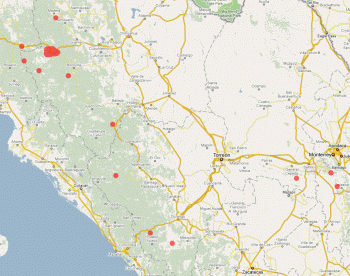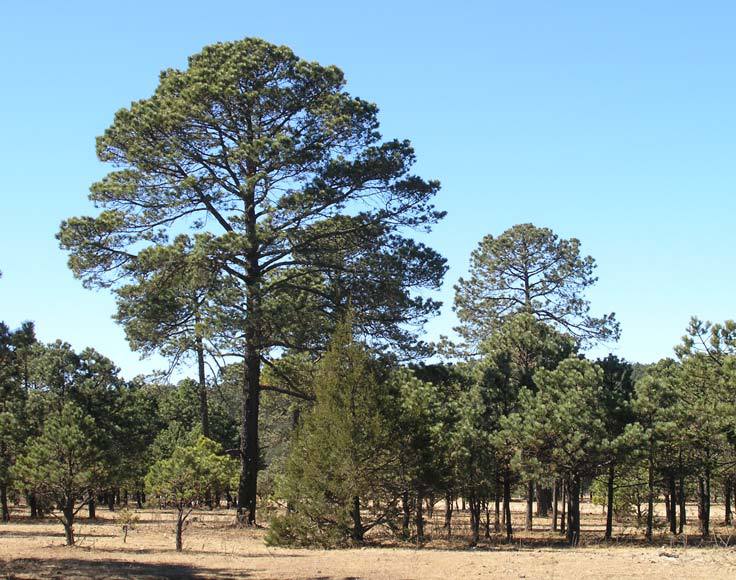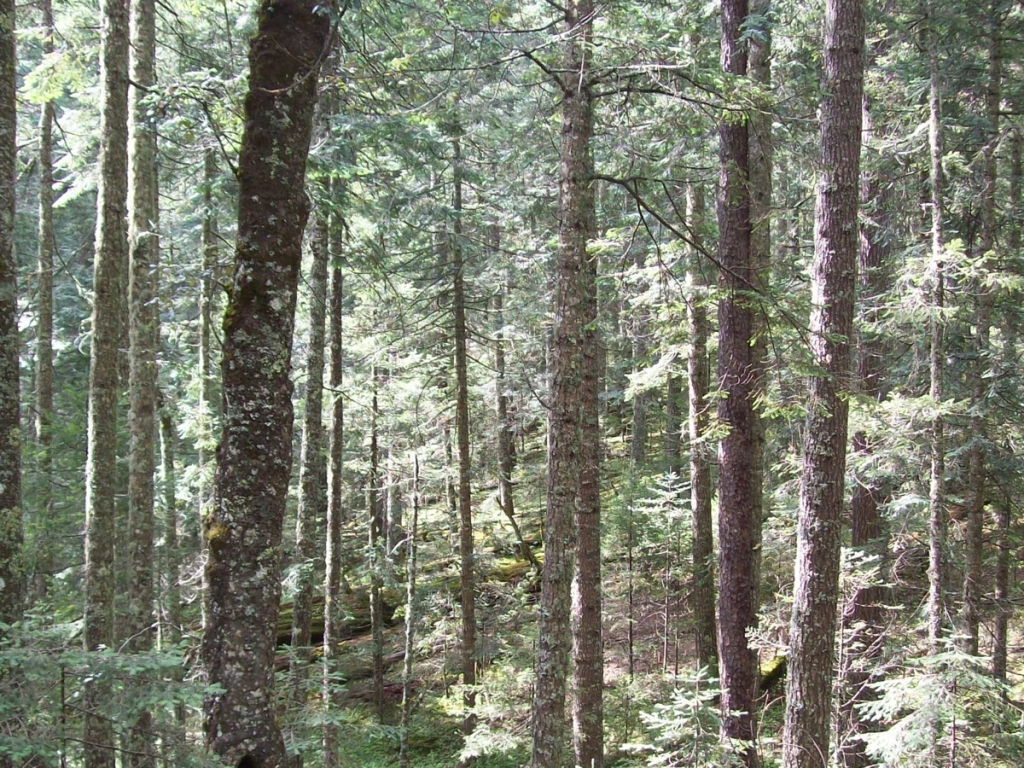Abies durangensis was first described in 1942 by Maximino MartÃnez (1888-1964) and is commonly known as Durango fir, or as Ocote and Abete de Durango in the Spanish language.
Description. Durango fir is an evergreen coniferous tree, which grows to a mature height of 60 to 120 feet (20 - 40 m) tall with a diameter at breast height of 60 inches (150 cm). Long straight trunk branches grow horizontally outward. The crown is nearly conical to irregular-round shape. Young trees have smooth, gray or reddish-brown bark . In older trees, it will become deeply furrowed and cut into oblong plates with a blackish brown color. The grooved, smooth or sparsely hairy shoots are purple to reddish brown and have round or egg-shaped leaf scars.
The oblong, egg-shaped buds are 0.16 to 0.2 inch (4-5 mm) long. They are surrounded by a pinkish-yellow resin layer. Needles are obtuse or rounded at the tips 1 - 2 inches (1.4 - 4.5 cm) long and 0.04 to 0.06 inch (1 - 1.6 mm) wide. They are Blue green on top and light green at the needle base with two white stomatal bands.
Standing among the leaf axils, pollen cones are 1 to 2 inches (2.5 - 5 cm) long. The upright, almost cylindrical seed cones are 2 to 4 inches (5 - 10 cm) long and 3 to 4.5 inches (7.5 - 11 cm) thick on short stalks. At maturity, they are pale yellow to medium brown. The resinous, yellow seeds are 0.24 to 0.3 inch (6 - 8 mm) long. Each seed has a 0.28 to 0.4 inch (7 - 10 mm) long orange-yellow wing.

Distribution. This species is native to Mexico - from the north of Jalisco to the south across Sinaloa and Durango as far as Chihuahua and northwestern Coahuila in the north. It prefers a cool, damp climate growing at 5,000 to 9,200 feet (1,600 - 2,900 m) of elevation.

